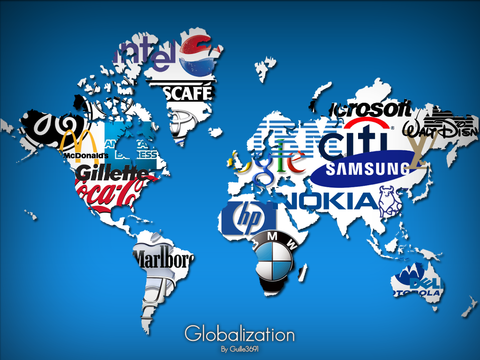Globalization Webquest
|
Complete the Globalization Webquest below using your own notebook paper or download worksheet. If you do not finish in class, complete the assignement at home or come in during Coach Class to complete it.
|
| ||||||
STEP ONE: What is Globalization?
Click this link - http://www.globalization101.org/what-is-globalization
Read the entire article and answer the following questions.
1. Sum up globalization in eight (8) words or less.
2. Give an example of "historic" globalization.
3. Since 1950 the volume in world trade has increased by __________%. Why would this matter to a human geographer?
4. List one argument that a proponant (supporter) of globalization might give.
5. List one argument that an opponant of globalization might give.
STEP TWO: THE GLOBALIZATION OF SESAME STREET
Click this link: www.sesameworkshop.org/where-we-work
The website show 13 countries in the blue bar where Sesame Street is shown. Click on at least 5 of them and read about the different programs. Listen to a theme song or two and answer the question below.
6. How do the producers of Sesame Street adapt to the cultures of the world, while "going global"? Give specific examples.
STEP THREE: THE GLOBALIZATION OF COKE
Click this link: www.thecoca-colacompany.com/ourcompany/index.html
Explore the website to answer the questions that follow.
7. Coke by the numbers.
a. In how many countries are coke beverages sold?
b. How many employees does the company have worldwide?
c. How many different beverages does Coke have worldwide?
d. How many servings of Coke are there per day?
8. Click on the "Coca-Cola System"
a. What is the "Coca-Cola System" in terms of globalization?
b. What is Coke's vision for globalization?
9. Click on "Brands" at the top and look at 5 products that are unfamiliar to you. When you are finished answer following the questions.
a. How does Coke appreciate local diversity in its products? (In other world, how do they respect the cultures of the various countries.)
b. In your opinion, is Coca-Cola a "responsible global corporation"? Explain your point of view.
STEP FOUR: VANISHING CULTURES
Next, visit the Vanishing Cultures Photo Gallery by click this link: http://stevemccurry.wordpress.com/2010/02/22/cultures-on-the-edge/
10. Choose any three (3) culture groups to investigate in the gallery. Use a mind map to summarize the unique aspects of each group. Be sure to include WHO they are, WHERE they are located, and HOW globalization has affected them.
Click this link - http://www.globalization101.org/what-is-globalization
Read the entire article and answer the following questions.
1. Sum up globalization in eight (8) words or less.
2. Give an example of "historic" globalization.
3. Since 1950 the volume in world trade has increased by __________%. Why would this matter to a human geographer?
4. List one argument that a proponant (supporter) of globalization might give.
5. List one argument that an opponant of globalization might give.
STEP TWO: THE GLOBALIZATION OF SESAME STREET
Click this link: www.sesameworkshop.org/where-we-work
The website show 13 countries in the blue bar where Sesame Street is shown. Click on at least 5 of them and read about the different programs. Listen to a theme song or two and answer the question below.
6. How do the producers of Sesame Street adapt to the cultures of the world, while "going global"? Give specific examples.
STEP THREE: THE GLOBALIZATION OF COKE
Click this link: www.thecoca-colacompany.com/ourcompany/index.html
Explore the website to answer the questions that follow.
7. Coke by the numbers.
a. In how many countries are coke beverages sold?
b. How many employees does the company have worldwide?
c. How many different beverages does Coke have worldwide?
d. How many servings of Coke are there per day?
8. Click on the "Coca-Cola System"
a. What is the "Coca-Cola System" in terms of globalization?
b. What is Coke's vision for globalization?
9. Click on "Brands" at the top and look at 5 products that are unfamiliar to you. When you are finished answer following the questions.
a. How does Coke appreciate local diversity in its products? (In other world, how do they respect the cultures of the various countries.)
b. In your opinion, is Coca-Cola a "responsible global corporation"? Explain your point of view.
STEP FOUR: VANISHING CULTURES
Next, visit the Vanishing Cultures Photo Gallery by click this link: http://stevemccurry.wordpress.com/2010/02/22/cultures-on-the-edge/
10. Choose any three (3) culture groups to investigate in the gallery. Use a mind map to summarize the unique aspects of each group. Be sure to include WHO they are, WHERE they are located, and HOW globalization has affected them.

